PROTECT YOUR DNA WITH QUANTUM TECHNOLOGY
Orgo-Life the new way to the future Advertising by AdpathwayMulch is magical. It’s a secret ingredient for garden success. Ask an experienced grower if they use it, and you’ll probably get a “yes” every time!
So, what is it? It’s a protective layer that sits on top of the soil. It feeds the earth with nutrients, it prevents water from evaporating, and it stifles weeds. It’s an essential component in veggie and ornamental gardens.
The type of mulch you should use depends on your specific garden needs. Some are better for ornamental shrubs and perennials, while others are best for veggie and fruit crops. You may need two different types if your garden has multiple sections.
No matter the size of your yard and the plants inside it, mulch is a superb amendment for all sites. Add it to all of your containers, planters, raised beds, and in-ground beds! But before you do, make sure you’re aware of these mulch dos and don’ts.
Epic Organic Garden Straw
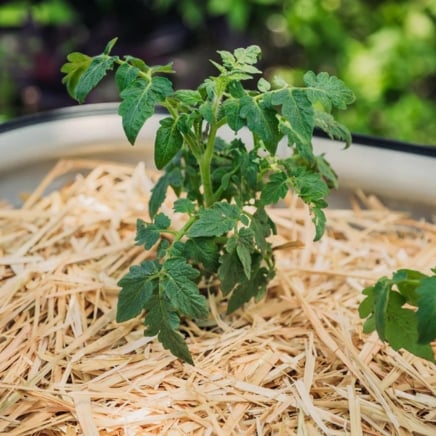
Epic Organic Garden Straw
Cover Crop Crimson Clover

Cover Crop Crimson Clover Seed Shaker
Urban Worm Coco Coir

Do Try Chip Drop
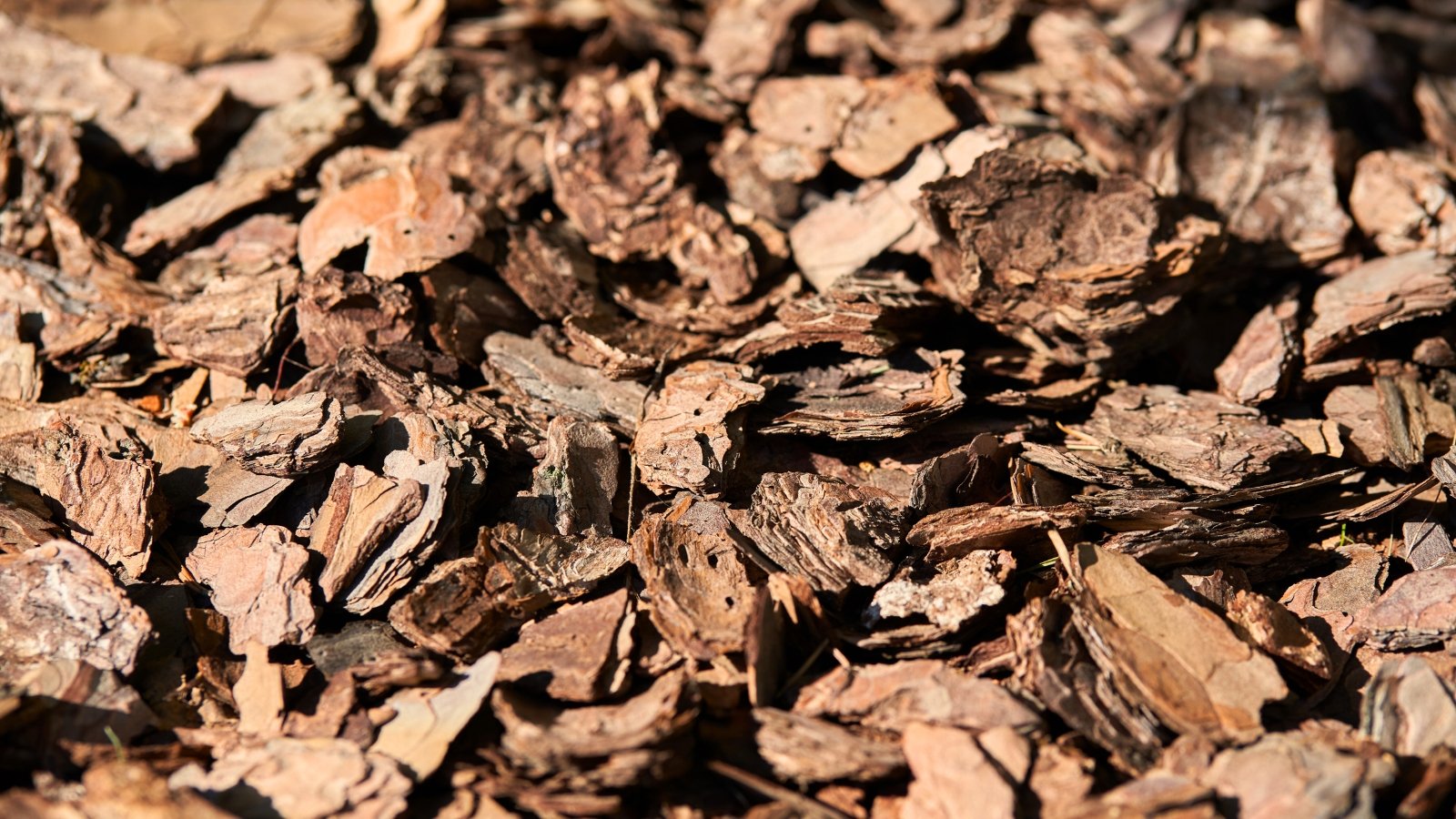 Wood chips show up in whatever tree type is handy.
Wood chips show up in whatever tree type is handy.Mulch doesn’t have to be expensive. Do a search for free or cheap alternatives before you buy bags from the store. It’ll help your budget! Many cities offer a free chip drop service where they dump a pile of wood chips on your driveway.
Or, consider using a free service like ChipDrop. It matches arborists with gardeners who want free wood chips. Be warned, though, that they’ll give you tons of chips! You’ll wake up to a giant pile on your driveway.
Because these services are free, they don’t offer much selection or choice. You’ll get whatever type of wood is readily available, from conifers to deciduous trees. You may need to purchase wood chips or shredded bark if you’re looking for a specific kind of wood.
Don’t Apply Wood Near Vegetables
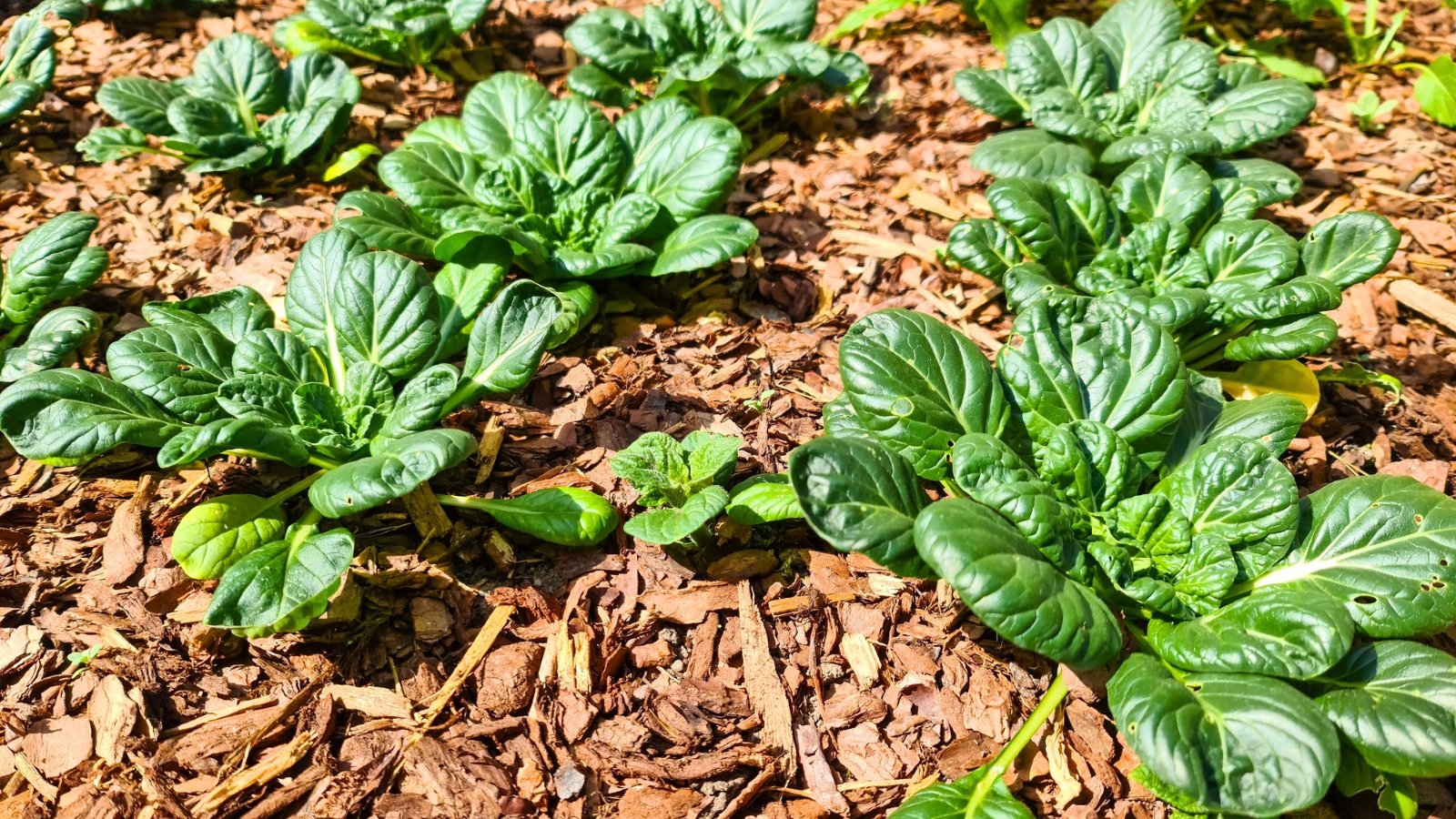 Fresh wood chips can steal nitrogen from hungry veggies.
Fresh wood chips can steal nitrogen from hungry veggies.Though wood chips are free, they’re not that helpful in the vegetable garden. Wood pulls nitrogen out of the soil while it breaks down. This most often occurs with small chip particles that mix into the soil, but it can happen anytime wood touches the ground.
For the best results, use wood chips in ornamental gardens or on pathways. Apply straw, compost, or leaf mold to veggie gardens.
If you’re adding wood to the veggie garden, opt for decomposed or partially broken-down pieces. They’ll pull less nitrogen from the soil than uncomposted pieces.
Do Make Mulch Yourself
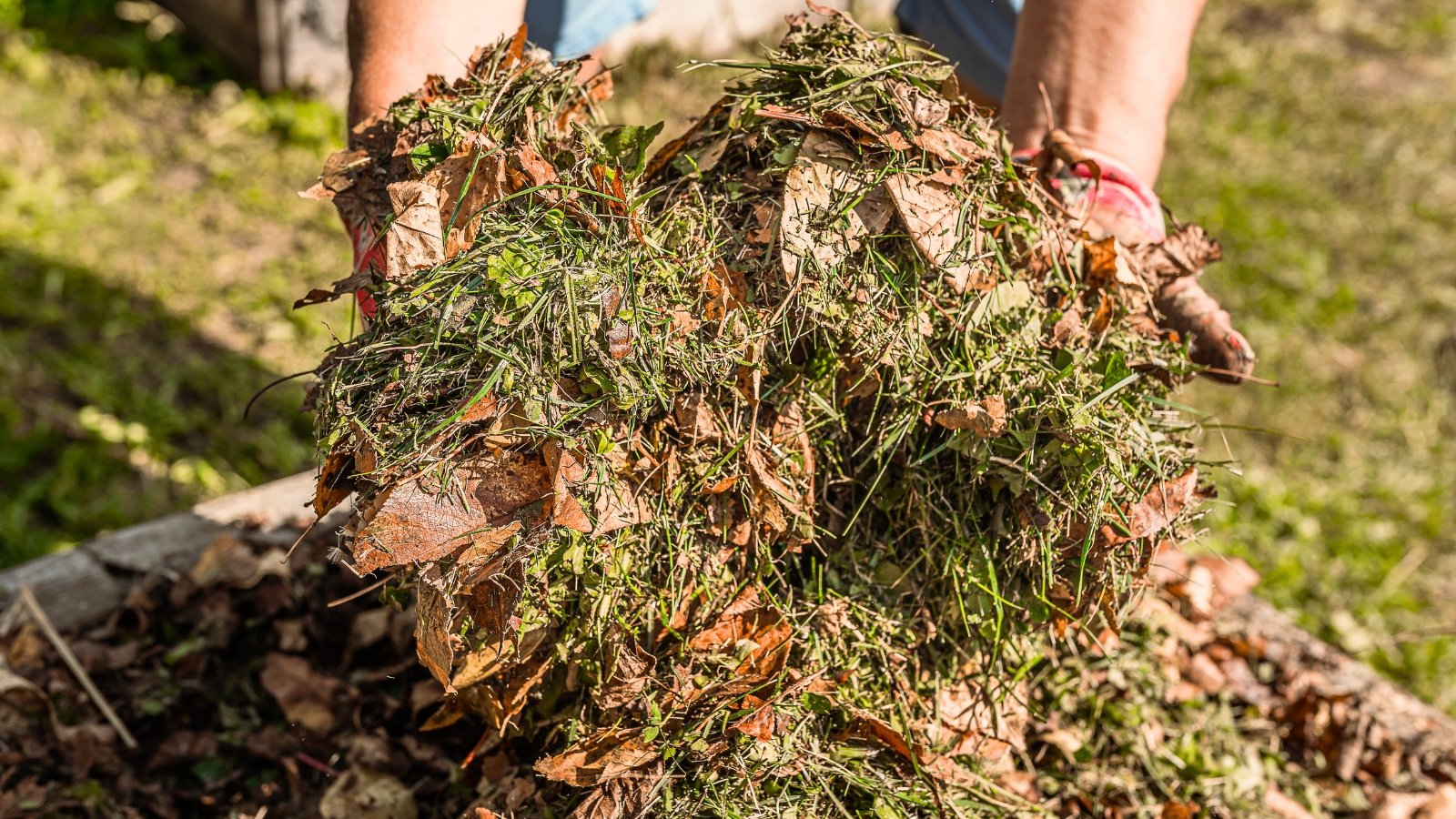 Turning scraps and leaves into mulch creates garden gold at home.
Turning scraps and leaves into mulch creates garden gold at home.Another cost-effective way to mulch is to make some yourself! There are a few different types you can make or source, depending on where you live. I like to use leaves and leaf mold, as they’re both readily available in my region of the Pacific Northwest.
In the absence of free mulch, make compost! Compost is, by far, the supreme amendment. It consists of broken-down organic matter, and it’s easy to make in the backyard. If you have kitchen scraps, garden clippings, and paper waste, you have the necessary materials for compost!
Compost may seem complicated, but it comes down to three essential factors: air, moisture, and nutrient balance. Make a pile of waste, turn it daily with a pitchfork, and keep it moist while it breaks down. If you’re looking for more information, use this comprehensive guide to learn how to compost in the backyard.
Do Use Organic Mulch
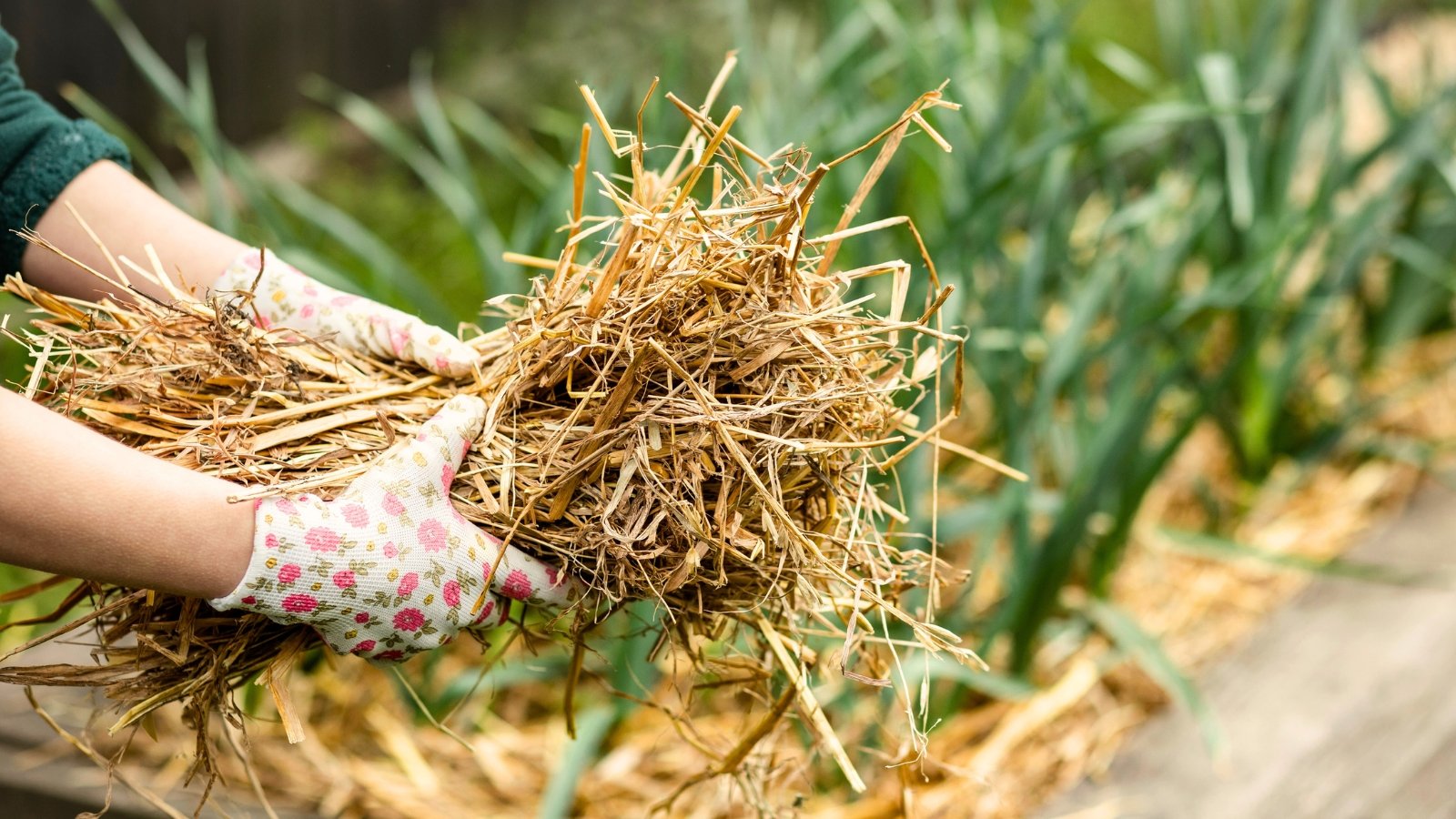 Soil bugs and fungi love organic mulch.
Soil bugs and fungi love organic mulch.Not all mulches are created equal! Organic mulches reign supreme. They consist of materials that readily break down over time. Synthetic mulches consist of inorganic materials that don’t decompose.
Organic mulch has more benefits than synthetic types because it feeds and protects the soil. It introduces beneficial organisms like fungi, bacteria, worms, and archaea. As it decomposes, it releases nutrients that are essential for healthy plant growth.
If you can’t find an organic type at your local garden center, try repurposing common garden materials. Any of these materials works well as an organic mulch:
- Coco Coir
- Compost
- Fallen Leaves
- Leaf Mold
- Straw
- Wood Chips
Don’t Leave Synthetic Mulch Out
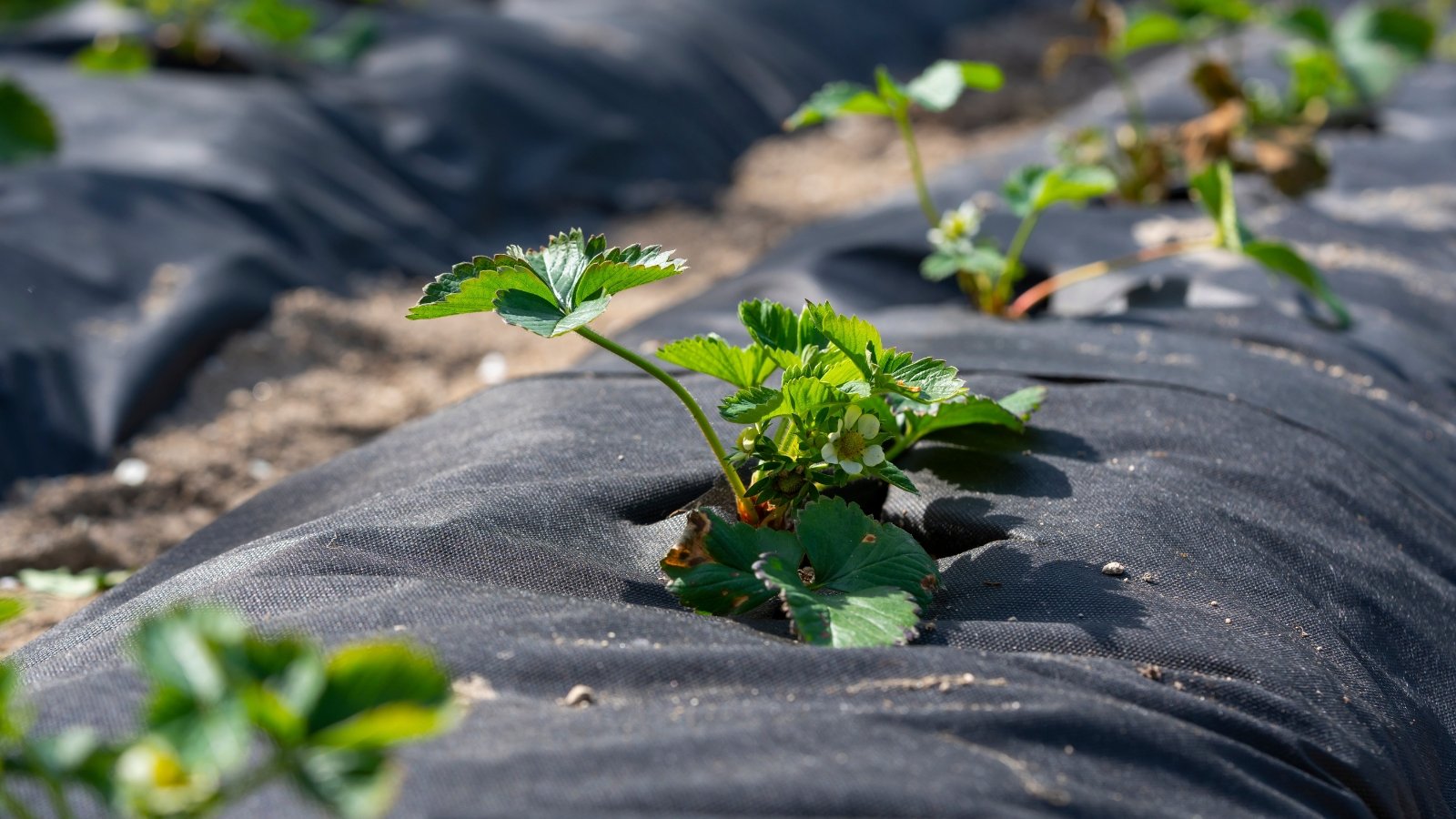 Farmers swap tarps yearly to keep weeds under control.
Farmers swap tarps yearly to keep weeds under control.If you do decide to use synthetic mulch, like a plastic sheet or tarp, take care not to leave it in the garden for longer than a year. Natural processes cause the plastic to break into a hundred pieces. Roots will grow thick both above and below the tarp, making it difficult to remove.
When farmers use tarps, they tend to put them out for a season to prevent weeds from growing. At the end of the season, they remove the tarps and purchase new ones for the next year.
You can similarly use plastic sheeting to smother weeds. Lay a sheet out, weigh its edges down, and wait for the weeds underneath to die. Remove the tarp after the weeds die, then plant crops or shrubs in their place.
Many landscaping companies and garden centers will advise you to put down plastic sheets, then put mulch on top. Don’t do this! Weeds will eventually grow, and the plastic will break apart. Smother the weeds first, remove the plastic, and add an organic amendment on top of the ground.
Don’t Use Artificially Colored Mulch
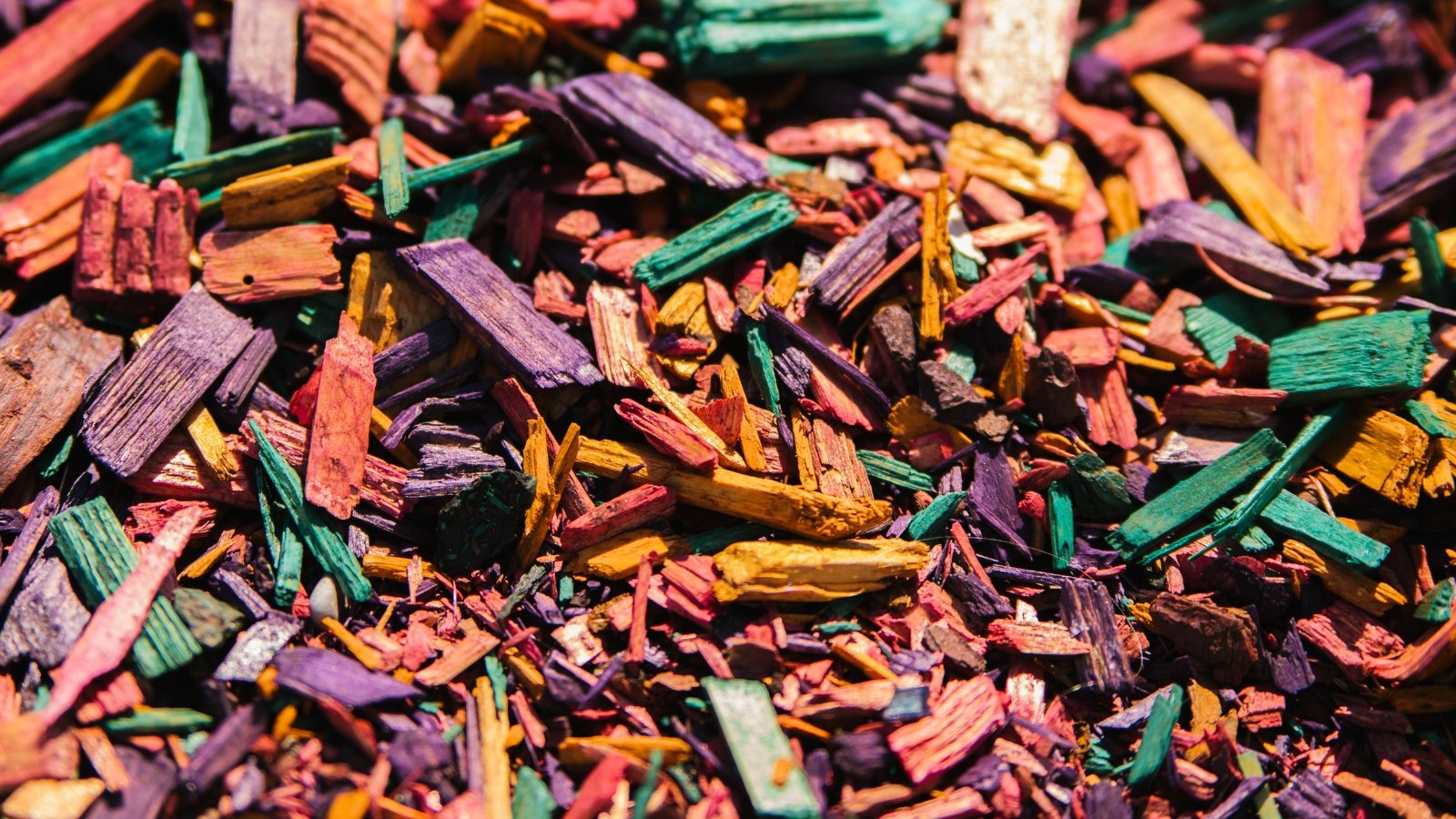 Some colorful chips come from treated, unsafe wood sources.
Some colorful chips come from treated, unsafe wood sources.As I mentioned earlier, there are dozens of mulch options available nowadays! Some stores sell artificially colored wood chips that are red or black. The colors are superb for matching designs and garden styles.
The downside of artificially dyed mulch is that it’s difficult to know where the wood came from. It could have toxic substances, plant-killing chemicals, or harmful sprays. Many dyed wood chip mixes utilize old, treated wood from pallets and construction.
If you love the fake color and want it in your yard, choose a dyed mix that clearly states its origin. Know where the wood comes from so you can avoid harmful or toxic substances leaching into your garden.
Don’t Add Too Much
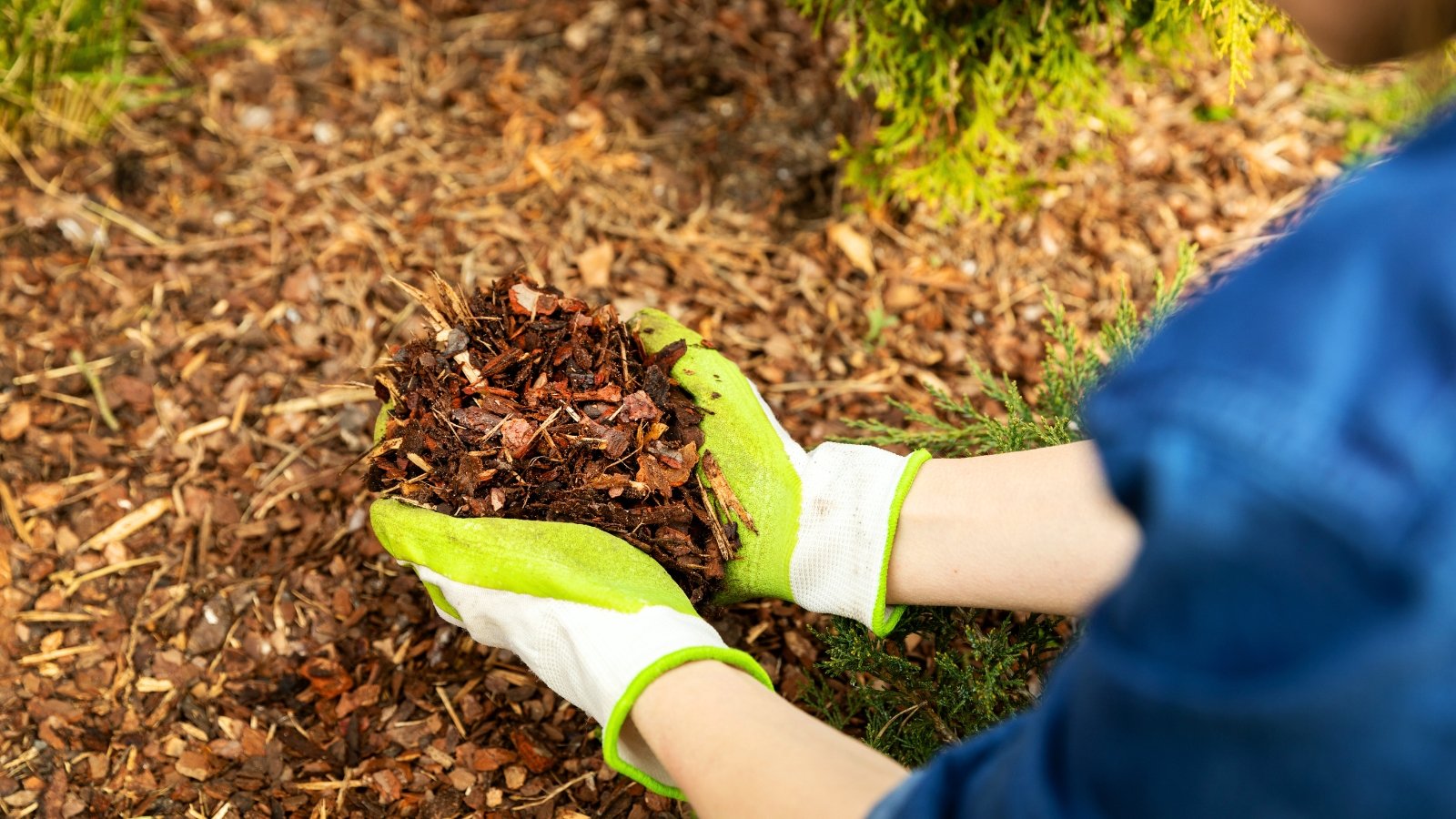 Too thick a layer can suffocate plant roots quietly.
Too thick a layer can suffocate plant roots quietly.Too much of a good thing can be bad, and the same is true for mulch. It’s best to keep the layer between two and three inches thick to avoid damaging plant roots, especially for crops and wildflowers. Ornamental shrubs and trees can handle between three and four inches of mulch.
Plant roots need access to air and water to thrive. When there’s a thick layer of compost or leaves atop the soil, these roots struggle to access the oxygen and carbon dioxide they need. Normal processes, like photosynthesis and respiration, will suffer.
When adding a new layer, first check to see if unincorporated mulch still exists from the last application. There’s a chance to overwhelm the garden with new applications. Whether old or new, maintain a top layer two to three inches thick for crops and three to four inches for trees and shrubs.
Don’t Make Mulch Volcanoes
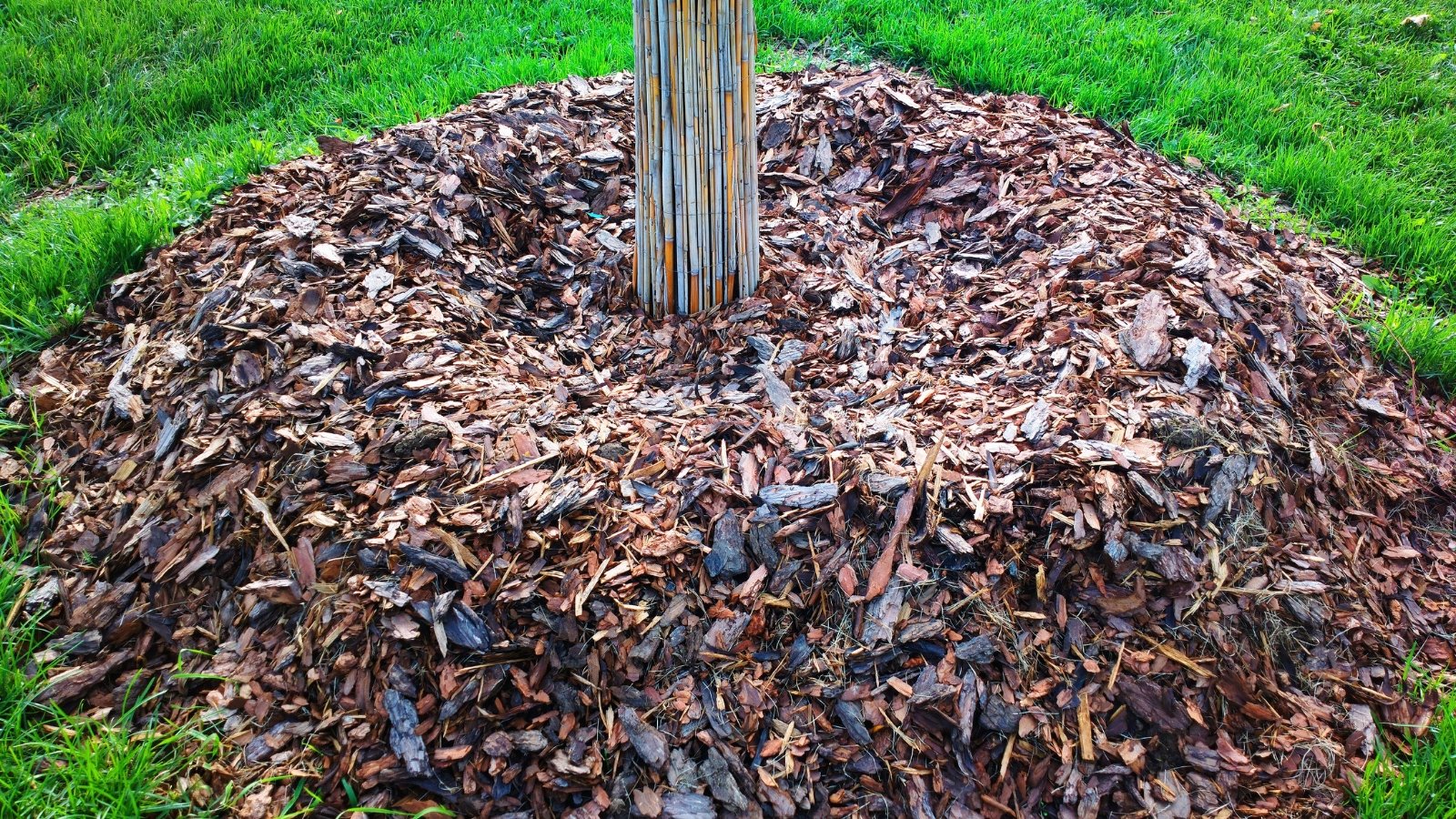 Roots grow wrong when piles hug the trunk tightly.
Roots grow wrong when piles hug the trunk tightly.I am a mulch volcano hater, and for good reason! These piles create issues for trees and shrubs as they mature. The moats cause fibrous roots to grow above the soil that threaten the health and stability of the tree.
A volcano is a pile of mulch four inches thick or taller, set on the trunk of a newly planted tree. It may look like it conserves moisture, but it has a myriad of negative effects. It leads to diseases infecting the wet trunk that’s covered, and it promotes root growth above the soil surface.
Fix a volcano by raking the pile out over the tree well. Use it to make a layer three to four inches thick, and leave a gap between the mulch and the tree trunk. The gap prevents the trunk from staying moist, protecting it from fungi, bacteria, and pests.
Do Plant More Plants
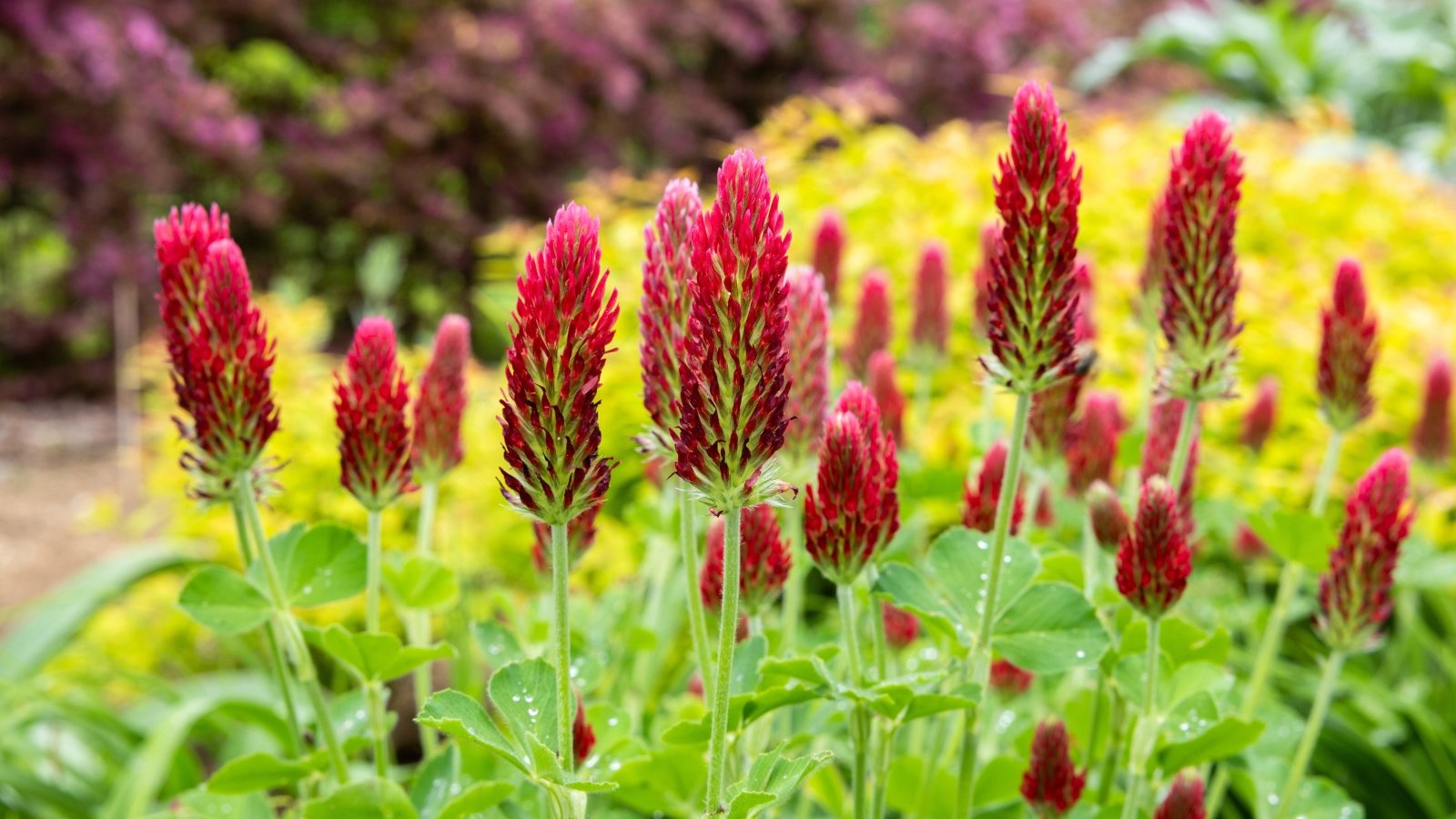 More plants mean healthier soil and fewer bare patches.
More plants mean healthier soil and fewer bare patches.Instead of spreading dead organic matter along the soil, why not plant more plants? You’ll create a green mulch full of flowers, leaves, and seed pods. Wildflowers, groundcovers, and shrubs protect the soil with their roots.
Plant roots tend to foster beneficial bacteria, insects, and microorganisms. The root zone is full of nutrients and humus from worm activity and decomposition. Rather than leaving gaps in the soil, plant as many plants as possible to blanket the soil with lush growth.
Opt for long-spreading vines like Pacific blackberry, or try quick-spreading annuals like crimson clover. The options are endless! Use the plants you love to foster a living community of plants, microbes, and wildlife.


 14 hours ago
9
14 hours ago
9
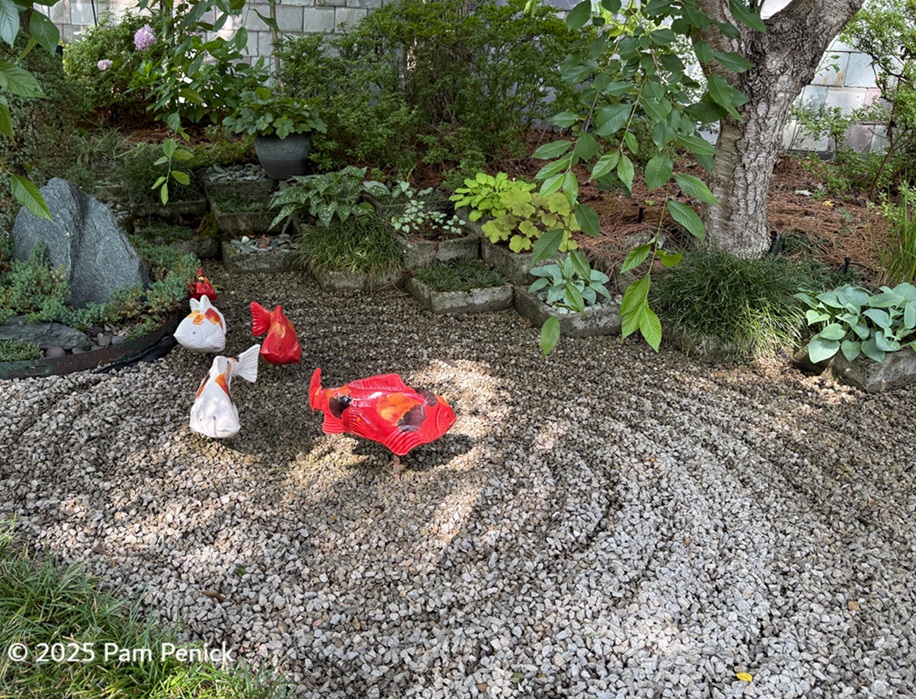
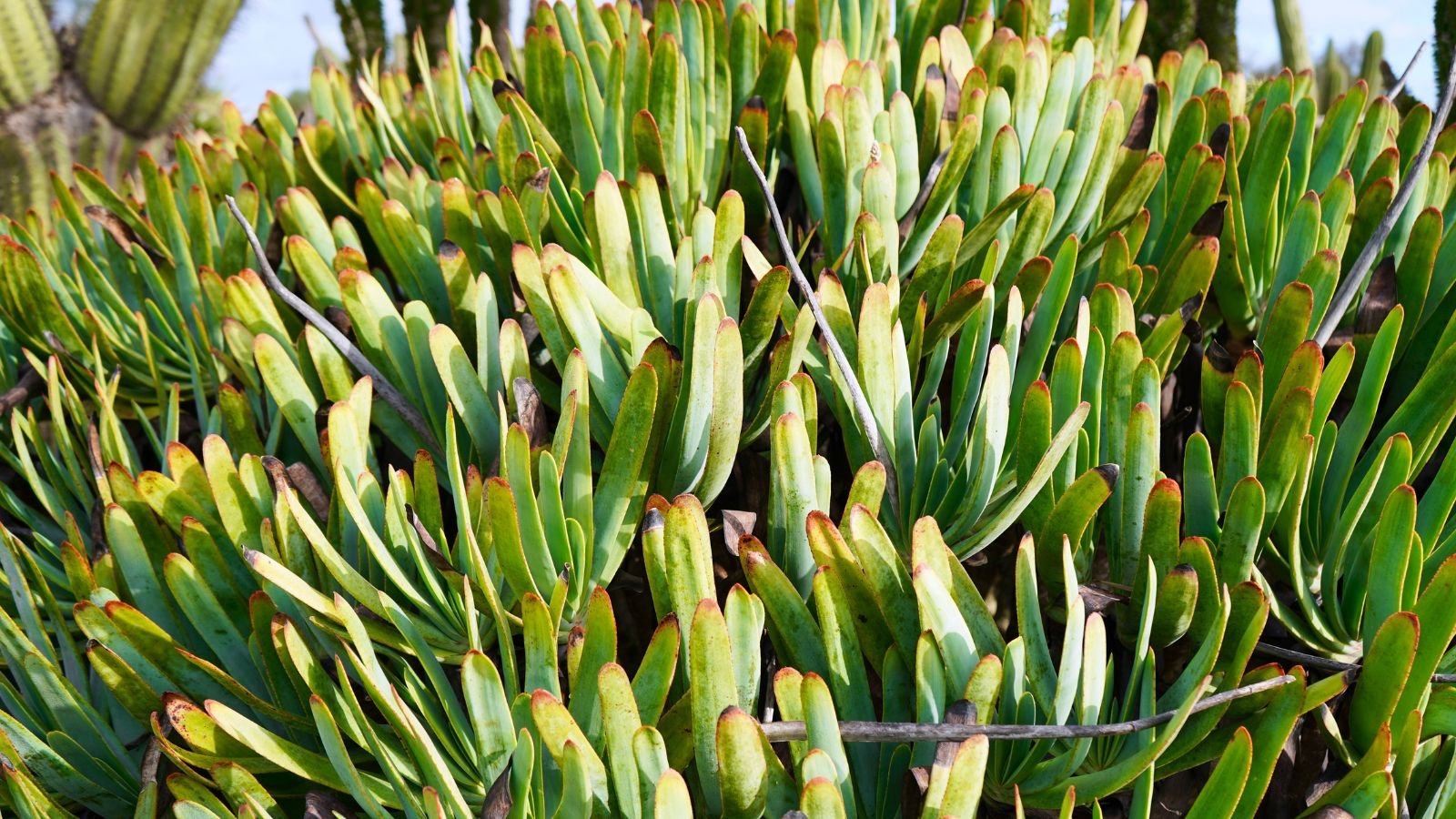



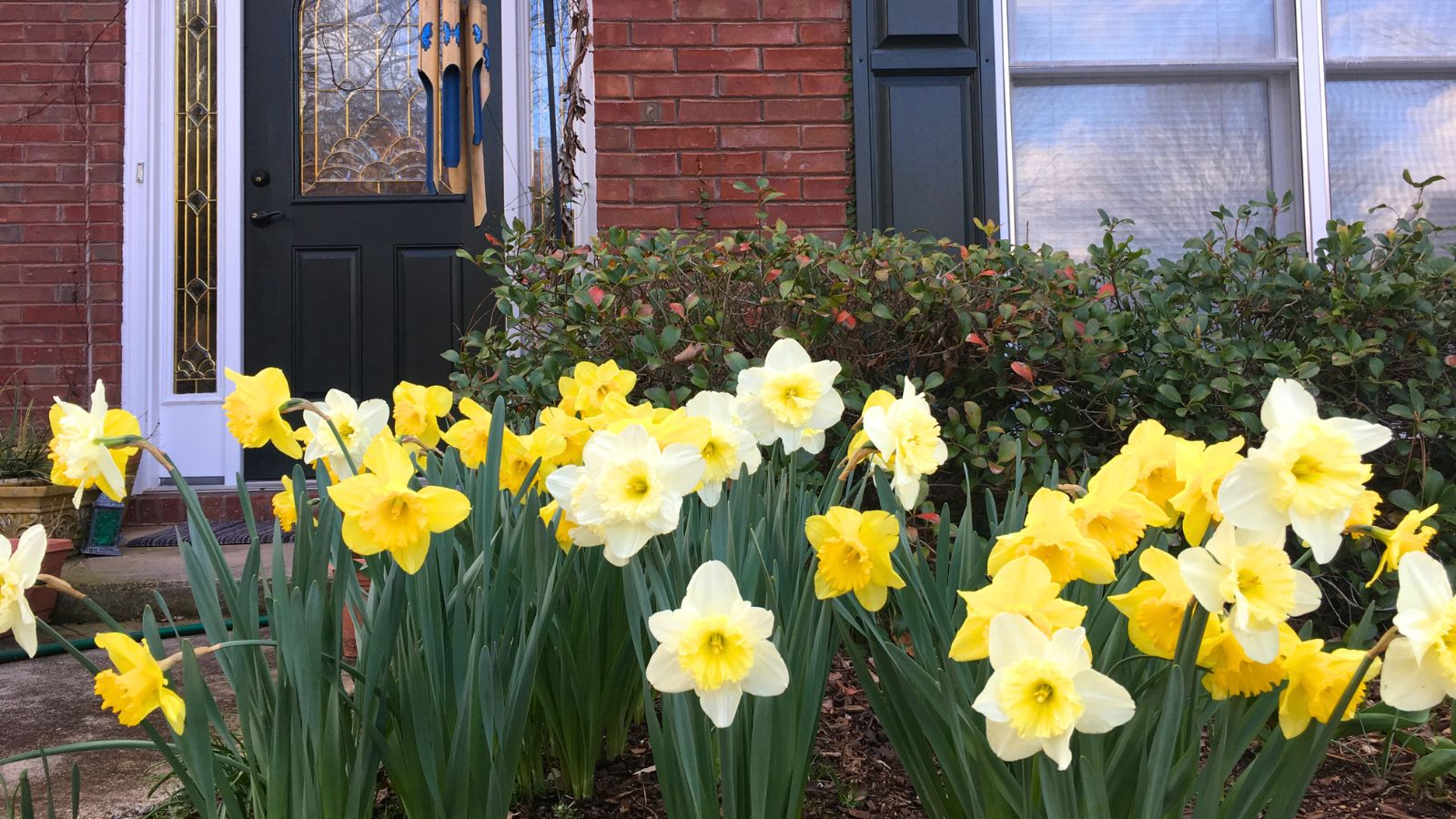















 English (US) ·
English (US) ·  French (CA) ·
French (CA) ·